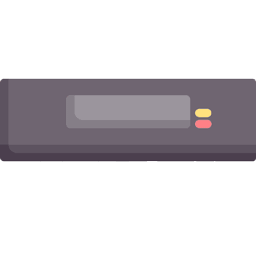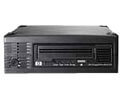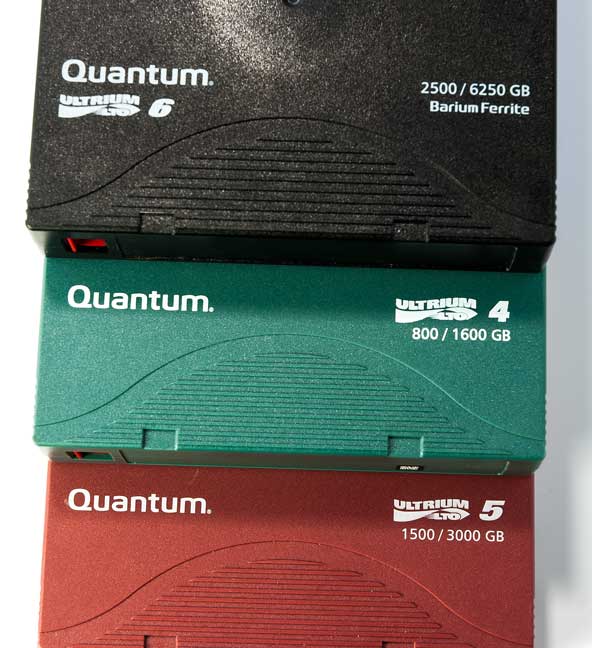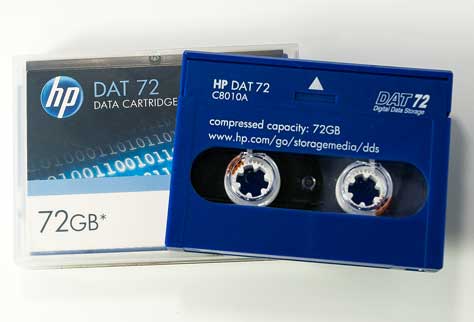LTO (Linear Tape-Open) is the most commonly used tape data storage technology today. It was developed and introduced in the 90s by IBM, HP and Seagate. Today the active development of the standard is lead by IBM, HP and Quantum. LTO is an open standard which allows other companies to acquire licences and manufacture their own LTO tapes and tape drives. One of the biggest tape drive manufactures today is Overland-Tandberg (prev. Tandberg Data).
Generations
Every couple of years a new LTO generation is introduced. With each generation the data capacity usually doubles and some generations include new features.
- Generation 3 introduced WORM tapes (Write Once Read Many) which can’t be overwritten
- Generation 4 introduced hardware AES-256 encryption
- Generation 5 introduced partitioning into two areas
- Generation 6 extended the partitioning to four areas
A tape drive of a particular generation supports tapes of the same generation and also usually tapes of one or two generations below. But tapes of a higher generation are not supported.




